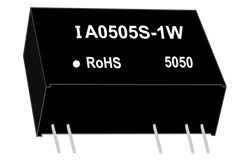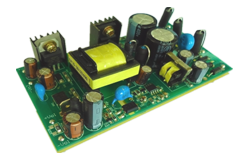ข่าว
Exploring the Electric Power Series: Uncovering the Wonders of Electricity
Author: ZYG Power Module Time: 2023-8-26
Electricity is an integral part of our daily lives, powering our homes, devices, and industries. It has become such a fundamental necessity that we often take it for granted. However, behind the flick of a switch lies a fascinating world of science and innovation. In this article, we will delve into the wonders of electricity and explore the electric power series that drives our modern society.
At its most basic level, electricity is the flow of electric charge. This charge is carried by tiny particles called electrons, which exist in all matter. The movement of these electrons creates an electric current, and it is this flow of charges that powers our lives. But how exactly does electricity work?
The fundamental concept behind electricity is based on the behavior of atoms. Every atom consists of a nucleus, containing positively charged protons and neutral neutrons, surrounded by negatively charged electrons. Normally, atoms have an equal number of protons and electrons, making them electrically neutral. However, when electrons are stripped away or added to an atom, it becomes positively or negatively charged, respectively.
Electricity is generated when a potential difference, or voltage, is created between two points. This voltage can be produced by various means, such as chemical reactions, magnetism, or mechanical motion. Once the voltage is established, it pushes the electrons from a region of negative charge (the source) towards a region of positive charge (the load). This flow of electrons is what we commonly refer to as an electric current.
เดอะ electric power series is a term used to describe the different sources and forms of electricity. The series begins with the primary sources of electricity generation, such as fossil fuels, nuclear energy, and renewable sources like solar and wind. These sources are used to produce electricity on a larger scale through power plants.
Power plants generate electricity by converting a primary energy source into mechanical energy. For example, in a coal-fired power plant, coal is burned to heat water and produce steam. The steam then drives a turbine, which spins a generator to produce electricity. Similarly, in a nuclear power plant, the heat generated by nuclear reactions is used to produce steam and generate electricity.
Once electricity is generated, it is transmitted through an extensive network of power lines, transformers, and substations. This transmission system ensures that electricity reaches homes, businesses, and industries. However, before it can be used by consumers, the electricity goes through a process called distribution. Distribution involves stepping down the voltage through distribution transformers, making it safe for consumption.
At the consumer level, electricity powers a wide range of devices and appliances. From lighting up our homes to charging our smartphones, electricity is a vital part of our everyday lives. It also plays a critical role in industries, powering machinery, production lines, and facilitating technological advancements.
Electricity has paved the way for countless innovations and advancements. It has revolutionized transportation with electric vehicles, making them a sustainable alternative to fossil fuel-powered cars. Additionally, the development of renewable energy sources has led to a greener and more environmentally friendly approach to electricity generation.

As we rely more on electricity, it becomes crucial to use it efficiently and responsibly. Energy conservation and sustainability are essential to ensure a reliable and environmentally friendly power supply. This can be achieved through practices such as using energy-efficient appliances, adopting renewable energy sources, and promoting awareness about responsible energy consumption.
เดอะ electric power series is a fascinating exploration of the wonders of electricity. From its basic principles to its generation, transmission, and utilization, electricity plays a significant role in powering our daily lives and driving our modern society. Understanding the science behind electricity and adopting sustainable practices will pave the way for a brighter and more sustainable future.
ก่อนหน้า: DM Series DC DC Power Supply manufacture
ต่อไป: China ZP Series: A Powerful AC DC Converter for All Your Energy Conversion Needs
ข้อมูลที่เกี่ยวข้อง
-
2023-4-14
AC-DC Converter: Changing Electrical Current for Efficient Power Conversion
An AC-DC converter is a device that changes alternating current (AC) to direct current (DC). It is commonly used in power supplies for electronic devices and appliances. The reason for converting AC to DC is that most electronic devices require DC to operate, whereas AC is the form of electricity that is delivered to homes and businesses. The conversion process of AC to DC involves several steps. The first step is to take the AC input and rectify it, which means converting it to a pulsating DC signal. This is achieved by using a diode or a bridge rectifier. The next step is to filter the pulsating DC signal using a capacitor or an inductor. This smooths out the signal...
ดูรายละเอียด -
2023-7-11
Exploring the Efficiency and Performance of Bidirectional DC-DC Converters
Introduction: Bidirectional DC-DC converters have gained significant attention in recent years due to their ability to efficiently transfer power bidirectionally between two different DC voltage sources. These converters are crucial in various applications, including renewable energy systems, electric vehicles, and energy storage systems. This article aims to explore the efficiency and performance of bidirectional DC-DC converters, shedding light on their advantages, challenges, and potential improvements. 1. Working Principle of Bidirectional DC-DC Converters: Bidirectional DC-DC converters, also known as buck-boost converters, use power semiconductors to convert DC voltage from a source to a desired voltage level. These converters can work in both step-up (boost) and step-down (buck) modes, allowing power to flow in either direction. By employing appropriate control algorithms, bidirectional...
ดูรายละเอียด -
2023-5-27
Converting 110V AC to 12V DC: A Comprehensive Guide
Converting 110V AC to 12V DC is a common requirement in many applications, such as in automotive and marine environments, as well as in lighting and electronic devices. The process involves using a device known as a power supply or converter, which is designed to transform the high-voltage alternating current (AC) from the mains electricity supply into low-voltage direct current (DC) that can be used by electronic devices. This comprehensive guide will explain the process of converting 110V AC to 12V DC in detail. Understanding AC and DC Before discussing how to convert 110V AC to 12V DC, it is important to understand the difference between AC and DC. AC is the type of electrical current that is supplied to...
ดูรายละเอียด -
2023-6-18
Bidirectional DC DC Converter: An Innovative Solution for Efficient Power Transfer
In today's world, efficient power transfer is a critical aspect that plays a significant role in the development of various industries, including automotive, renewable energy, and telecommunications. The traditional DC DC converter is widely used for power transfer, but it has limitations in bidirectional power transfer. To overcome these limitations, the bidirectional DC DC converter has been introduced, which is an innovative solution for efficient power transfer. What is a Bidirectional DC DC Converter? A bidirectional DC DC converter is a power electronic device that can transfer power bidirectionally between two DC sources. It can convert the input voltage from one DC source to another DC source with a different voltage level. The main advantage of this converter is its...
ดูรายละเอียด -
2023-10-27
High Voltage Power Supply Module: Unleashing the Power of Electricity
Introduction: Electricity has become an essential aspect of our daily lives. From powering our homes and vehicles to operating various electronic devices, the role of electricity cannot be undermined. One crucial component that enables us to harness the power of electricity is the high voltage power supply module. In this article, we will delve into the workings and importance of this module, exploring its applications and benefits. 1. Understanding High Voltage Power Supply Module: A high voltage power supply module is an electrical device that converts low voltage input into high voltage output. It typically comprises transformers, capacitors, diodes, and other components that enable the conversion process. The module operates on the principles of electrical energy conversion, where low voltage...
ดูรายละเอียด -
2023-6-28
The Electrifying Power Series: A Revolution in Sustainable Energy
The world is facing a massive energy crisis. Non-renewable resources such as coal, oil, and gas are running out, and the demand for energy is only increasing. In recent years, there has been a growing interest in sustainable energy, and this has led to the development of new technologies that can harness renewable sources of energy. One such technology is the Electrifying Power Series, a revolutionary new approach to sustainable energy. The Electrifying Power Series is a series of power plants that use renewable sources of energy such as wind, solar, and hydro power to generate electricity. These power plants are designed to be highly efficient, with minimal waste and emissions. They are also designed to be modular, so that...
ดูรายละเอียด


















